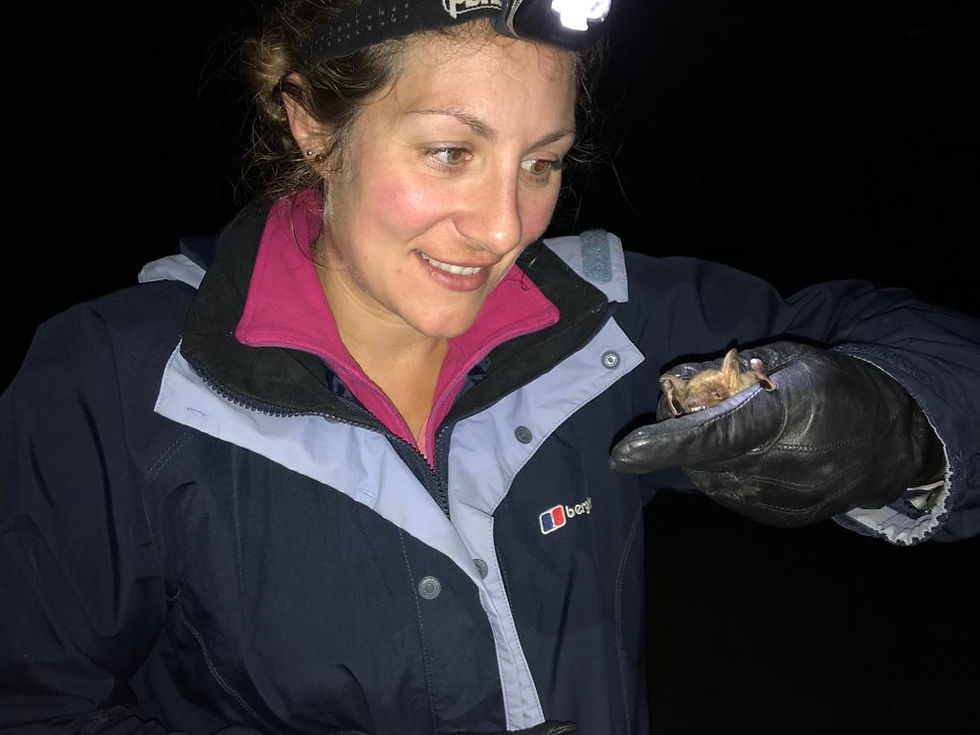Updated: Nov 18, 2020
We are well and truly in autumns grasp, with the temperatures beginning to plummet and winter letting us know it is on its way. This is the time of year wildlife prepare and fatten up for the upcoming colder months. Food - shelter - survival is on the top of all creatures Christmas lists. Many species have adapted a unique way of surviving this difficult time- Hibernation. Something I wish I could spend my winter doing!

What is hibernation?
When I think of hibernation, I imagine a little, spikey, hedgehog snuggled cosy and peacefully snoozing away until the warmth of spring awakens the little gem and he begins of his scurry journey once more. Whilst this is partly true, hibernation is much more complex.
Hibernation is basically a longggg, deepppp sleep. It can last up to months on end, dependant on the species. During this time the animals heart rate and breathing will slow and their metabolism and body temperature will significantly drop. This means that they wont burn as much energy and can use stored fats to survive.
This strategy means they can go for long periods without eating and survive the cold with out the need to migrate to warmer climates.
BUT- it is not all snoozes and dreams. They will occasionally wake up to go to the toilet, look for a snack or, if the temperatures drop too far (that they are in danger of freezing to death), their bodies will wake them up to warm up. How cool is that?!
What is torpor?
Torpor is the short-term drop in body temperature and metabolism. So hibernation is an extended period of torpor. This occurs in response to daylength, temperature and hormone changes.
So...what animals in the UK hibernate throughout winter?
Mammals
There are only 3 mammals in the UK that hibernate- Bats, Dormice and Hedgehogs. Bats will find a hibernation roost to spend the winter where their body systems will slow down to save energy, and their heart rate will drop to around 20 beats per minute. This is incredible considering their hearts beat around 1,000 beats per minute in flight!
Dormice make an unusual decision for hibernation... they come down from the safety of the trees and make a nest on the woodland floor. They stay in this vulnerable deep sleep for months on end. They are very very sweet and have even been known to snore!
Hedgehogs are the iconic British representation of hibernation. These national sweethearts make a cosy nest out of fallen leaves in a sheltered area as their hibernacula. Hedgehogs love a messy woodland floor and gardens, so instead of raking up your garden leaves, leave a few behind for our spikey friends.
Species such as Badgers and squirrels, which some people associate with hibernation, do not in fact hibernate. Badgers are just less active in winter and go through cycles of torpor. They can stay in their underground sett for days with out food when conditions are bad, but do not take on the big snooze. The same goes for squirrels. They keep food stores outside their drays to minimalise time spent outside in the cold and can rest in their cosy homes for days at a time if the weather is to harsh.
Reptiles
All British reptiles hibernate! Slow Worm, Adder, Grass Snake, Common Lizard, Sand Lizard, and Smooth Snake, all take the big winter snooze. This is because reptiles need sun to regulate their body temperature, so when winter comes, hibernation is needed to survive. Reptiles go into a version of hibernation called brumation. This specific term applies to reptiles and is associated with cold-blooded animals compared to hibernation which is more associated to warm-blooded animals. Brumation is the same as hibernation meaning the reptiles enter a state of deep sleep where they may not eat, drink, move or go toilet for several weeks on end.
Amphibians
All British species of amphibian hibernate too! BUT not all individuals will... depends on the temperature. Common Frog, Common Toad, Natterjack Toad, Pool Frog, Great Crested Newt, Smooth Newt, and Palmate Newt- all have the ability to sleep away winter. In chilly conditions when there is good, oxygenated water quality, frogs can stay submerged under water for several months! They will mainly choose to hibernate on land, but some will chose a pond. Frogs and toads tend to choose compost heaps, burying themselves in mud or leaf litter as hibernacula.
Insects
Quite possibly the most fascinating group that hibernate. Most insects will overwinter as eggs or larvae, but some rebels take on winter in adult form. Butterflies fall into this group with 5 of our 59 resident species of butterfly spending the winter as hibernating adults. These species include Brimstone, Peacock, Comma, Small Tortoiseshells and Red Admirals all taking on the big sleep. These butterflies like hollow trees, log piles and old rabbit holes but can also be seen hibernating in buildings. I have some beautiful Peacock butterflies hiding in the hay shed on the walls and hay bales! So beautiful. Many other insects hibernate also, such as some species of Ladybirds, bees and wasps!
Zzzzzz!



































